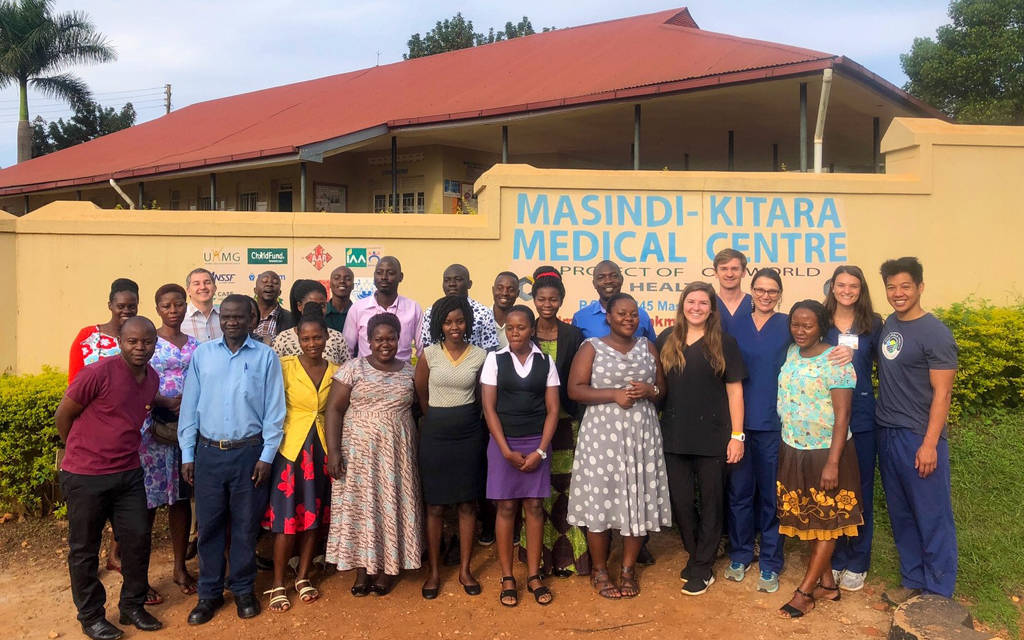The ACR Foundation’s Goldberg-Reeder Travel Grant Program facilitates knowledge sharing while assisting patients in low- and middle-income countries. The latest group of award recipients brought their skills, expertise, and energy to Uganda and Tanzania, where they worked with local colleagues and patients to advance radiological care. Fresh from their travels, the recipients shared their insights and experiences with the Bulletin.
Justin Ruey Tse, MD
TANZANIA
When Justin Ruey Tse, MD, a radiology resident at Stanford, returned to Dar es Salaam, Tanzania, it was like he had never left. His trip marked the second time he practiced at the Muhimbili National Hospital — the largest and oldest in Dar es Salaam. As a returning resident, he already had working relationships with many of the local residents and an understanding of the improvisation necessary in this environment.
On this second visit, Tse immediately noticed opportunities for care improvement. As he observed practices around the hospital’s MRI scanner, he found that the hospital did not have an MRI safety protocol. The hospital had already experienced two sentinel events, and Tse wanted to prevent additional ones.
“We observed unscreened patients’ family members going in and out of the magnet room or saw the magnet room was left open,” says Tse. “People could end up seriously injured if the proper precautions are not taken. So a goal that came out of the trip was to propose a detailed safety protocol to the engineering team that ensured that the doors to the room stayed closed, proper preparations were taken before a patient entered, patient and family members were supervised by hospital personnel, and the safety of the staff and patients remained top of mind.”
Tse found that another issue with the MRI and medical equipment was that all the posted signs and instructions were in English or French — even though the native language of the region is Swahili. Tse worked to redesign the signage and instructions so that everything was culturally specific, in Swahili, and understandable to patients with limited health literacy.
Tse notes that one of the central goals of his trip was to educate and provide substantive training — versus just lending a hand in day-to-day imaging. This distinction is critically important, says Tse. “We are not there to do radiology,” he says. “They have radiologists there, although not nearly enough to serve the population.1
We are there to help improve local practices by teaching their junior residents and providing the specialized training in abdominal, brain, musculoskeletal, and breast imaging they may not otherwise get in Tanzania.”
According to Tse, Muhimbili National Hospital often sees the most complex and rare cases. Since many of the images the radiologists see in the hospital are of metastatic cancers of the liver and kidneys, this specialized training helps to improve care and deepen the understanding of different treatment strategies.
On his second trip to Tanzania, Tse aimed to make a lasting impact based on the needs of the community. “Some needs are easier to anticipate than others,” says Tse. “You just have to be ready to listen, observe, and get feedback on what worked and what didn’t — and then you get to see that the impact you made was sustainable.”
“You just have to be ready to listen, observe, and get feedback on what worked and what didn’t — and then you get to see that the impact you made was sustainable.”
Trent P. Dittmer, MD
UGANDA
For Trent P. Dittmer, MD, a third-year resident at the Medical University of South Carolina (MUSC), mornings in Uganda involved doing rounds at the Masindi-Kitara Medical Center (MKMC). Dittmer often alternated between the adult, pediatric, and maternal wards reviewing patients’ medical treatments and advising on what imaging studies might be useful in each unique case. After rounds, Dittmer would spend the rest of the day in the sonography suite performing exams for a variety of medical complaints with a slew of cases focused on fetal well-being.
“Our goal was to build on the sonographic and radiographic techniques used by the medical team at MKMC,” says Dittmer. “For the first time in my young radiology career, I found I was hands-on with the US probe.”
For months leading up to his trip to Uganda, Dittmer had planned meticulously. But, as in all adventures, there were factors he could not predict — the biggest of all being the X-ray image processor malfunctioning. This meant he could not actually acquire images from MKMC to interpret during his time in Uganda. “We did manage to get images from a private practice in Masindi and did our best to roll with the punches,” says Dittmer. “There is always an element of unpredictability inherent in overseas travel.”
During his time at MKMC, Dittmer met a wide variety of patients, from a young man suffering from head trauma after a motorcycle accident to a pediatric patient with sickle-cell disease. “I saw a man infected with thyroglossal duct cyst as well as numerous cases of malaria, tuberculosis, and preeclampsia,” says Dittmer. “I was amazed daily by the complexity of cases at MKMC.” With assistance from his accompanying mentor, Maria G. Matheus, MD, an oncologist from MUSC, he was able to weave through intense days and grow his own understanding of the impact radiology can have.
Dittmer has found many ways to bring what he learned at MKMC back to his approach to care in the U.S. “I left Uganda with a better understanding of what it means to practice frugally while delivering the highest level of healthcare,” he says. He also acknowledges the challenges for patients and physicians in developing countries. “Global health needs to be expanded upon,” he points out. “We want to make it sustainable for those who come after us and come up with a curriculum that works after we are gone.”

